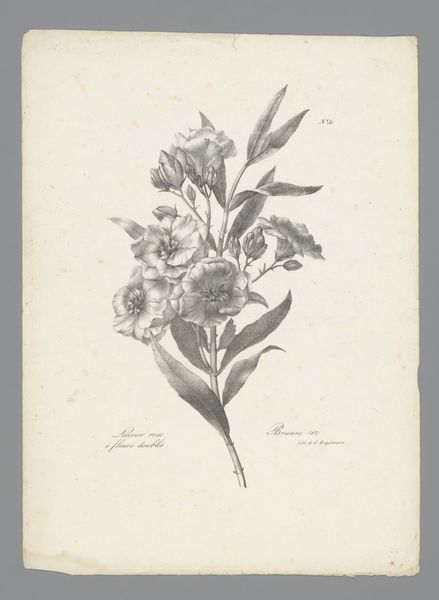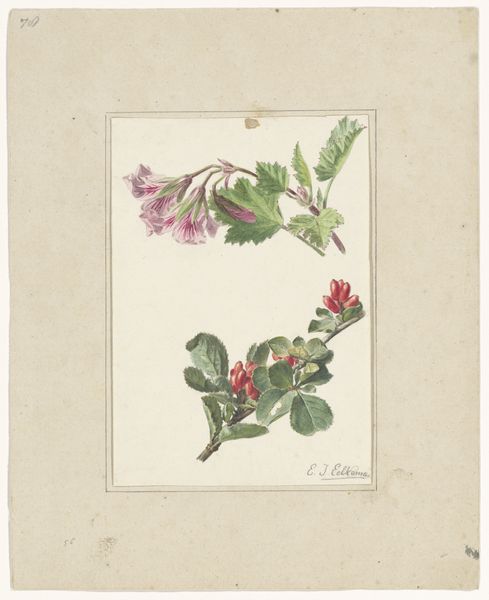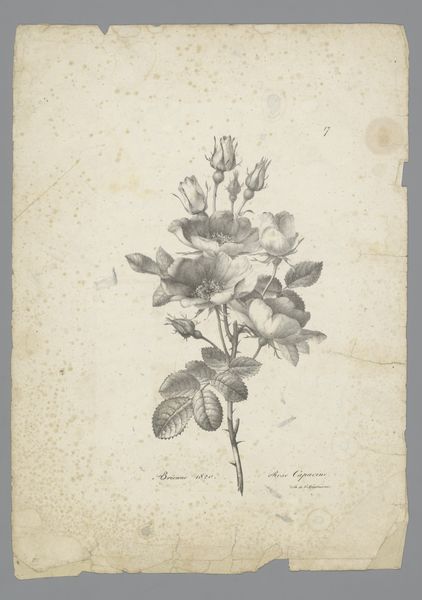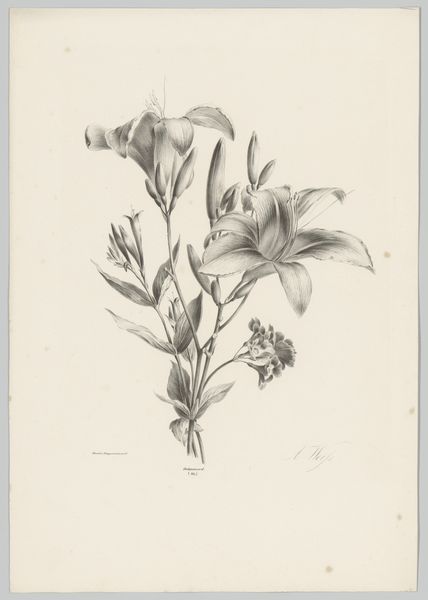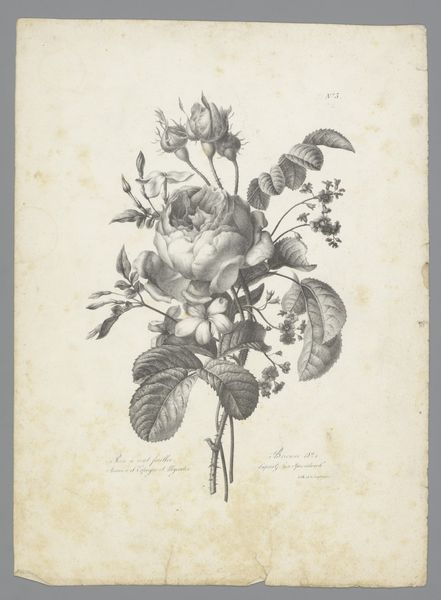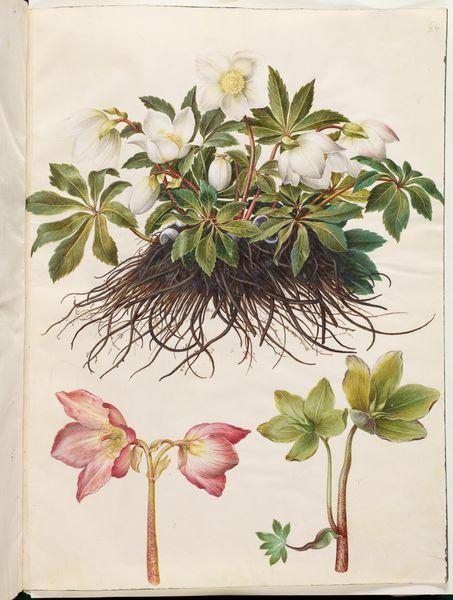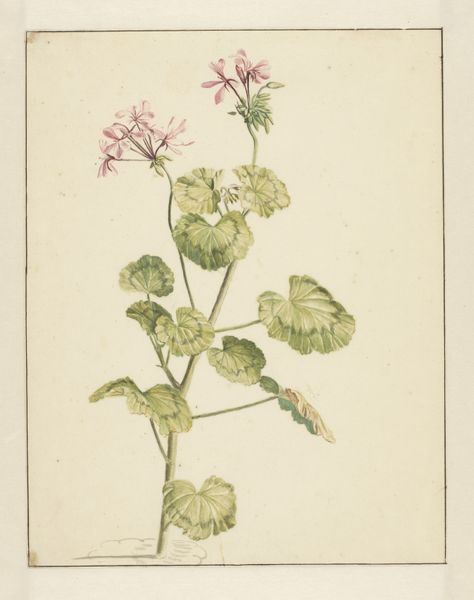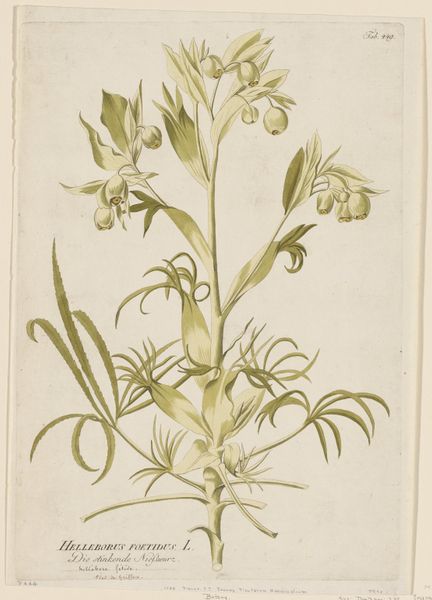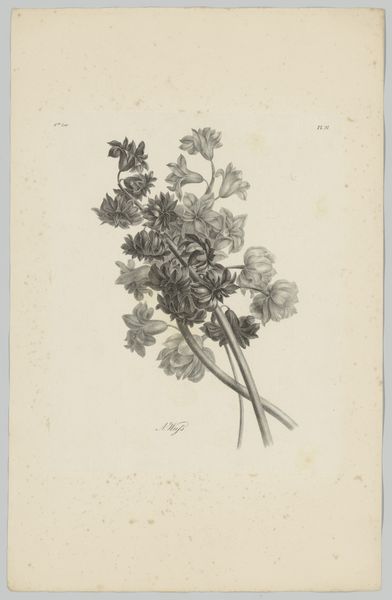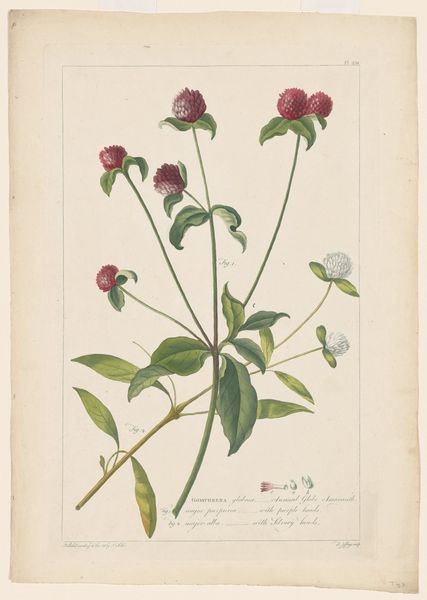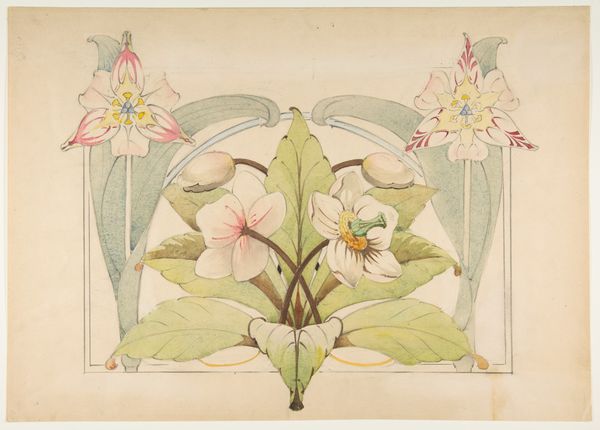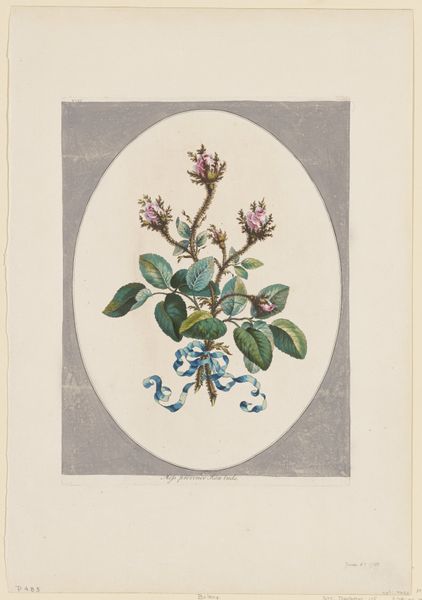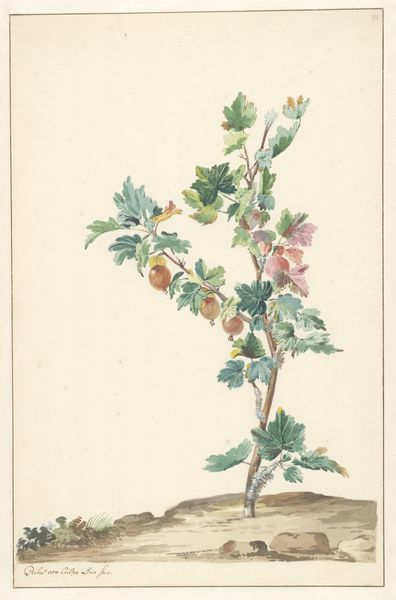
Dimensions: 8 1/8 x 5 7/8 in. (20.64 x 14.92 cm) (plate)
Copyright: Public Domain
Curator: This is "Title Page," an 1846 watercolor and print work by French artist Jean Ignace Isidore Gérard Grandville, here at the Minneapolis Institute of Art. Editor: Well, right away, it strikes me as a delicate piece with a dark undertone. It looks like a botanical illustration gone sideways – both enchanting and unsettling at once. Curator: Indeed. Grandville was a master of visual metaphor. You see, here, he's personifying letters into floral figures – symbols. It is part of his famous work giving human traits to plants and animals. This image acts as a cultural mirror, reflecting the fascination of the 19th century with classifying and anthropomorphizing nature. Editor: Yes, and let's remember the political landscape of the time. The July Revolution, the rise of the bourgeoisie. Aren't these flowering letters, so prettily arranged, almost mocking the social order? It's as if the alphabet itself has become another form of the elite, blossoming while being rooted, in this case quite literally, in oppression. The insects beneath suggest the toiling masses holding this elite structure together. Curator: Interesting point! Grandville's work always operated on multiple levels. The "personified letters" resonate with deeper mythological and symbolic coding, suggesting narrative continuities. The way the vines reach, forming each letter, each blossom a dancer, links back to older mythic symbols of transformation and growth. Consider how the Romantic movement intertwined those sensibilities. Editor: I see it less as Romantic continuity and more as a critical observation of romantic ideals. The 'animated flowers,' as they are labelled in French here, appear almost parasitic on the broader social body represented by the leaves. Look at their colors: faded, sickly almost. Perhaps Grandville's critique touches on the decadence he witnesses within Parisian society, represented through something beautiful like flora but is essentially drawing life from exploitation. Curator: A decadent visual garden fed by sociopolitical inequity; it is hard to dispute that reading! The artwork operates as both playful imagery and astute observation of Grandville's own moment. Editor: It challenges our desire to simply admire. Art asks us to resist a comfortable acceptance. It should prod our thoughts toward actionable changes.
Comments
No comments
Be the first to comment and join the conversation on the ultimate creative platform.
